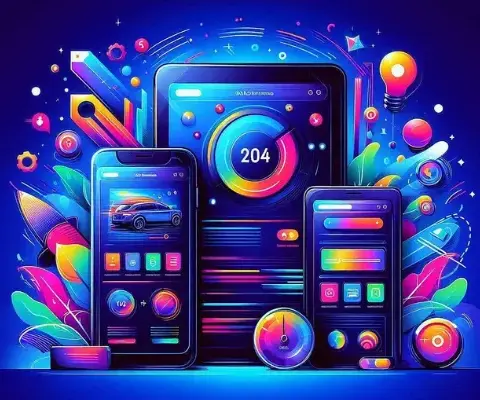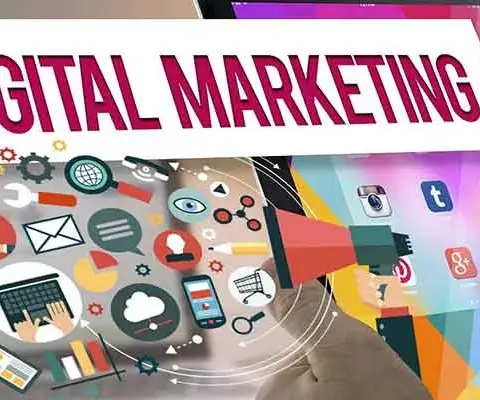Digital Marketing Efforts Are in Good Hands in the UAE
Digital marketing is a game-changer in today’s fast-paced business world, and the UAE is no exception. As one of the leading hubs for innovation and technology, businesses in the UAE are increasingly relying on expert digital marketing strategies to stand out from the competition. But with so many moving parts—SEO, social media, PPC, content marketing—how can you ensure your digital marketing efforts are in good hands? Let’s explore why having the right partners and strategies in place is crucial for success in the UAE.
Why Trust Matters in Digital Marketing
In a world where algorithms and platforms change frequently, businesses need to trust their digital marketing partners to stay ahead. The UAE, known for its competitive and dynamic market, demands a skilled and knowledgeable digital marketing approach. Trust is not just about delivering short-term results; it’s about long-term reliability, adaptability, and expertise in navigating challenges specific to the region.
From handling cultural sensitivities in branding to staying compliant with local regulations, digital marketing agencies in the UAE offer tailored solutions that fit the unique landscape of this global business hub.
Proven Expertise: Why the UAE is the Place for Digital Marketing Excellence
The UAE is home to a wealth of skilled professionals who understand the nuances of digital marketing on a global scale. With a diverse workforce of experts from various parts of the world, digital marketing agencies here are well-equipped to handle all aspects of your online presence—from paid search campaigns to content creation and analytics.
For businesses in the UAE, working with an experienced team means gaining access to:
Advanced Strategies: From AI-driven campaigns to personalized content marketing, top agencies in the UAE are on the cutting edge of global digital trends.
Localized Expertise: The best digital marketing strategies consider the local audience, cultural relevance, and regional trends, ensuring your brand resonates effectively with consumers.
Multilingual Campaigns: Whether targeting Arabic-speaking locals or expats from various countries, agencies in the UAE offer multilingual marketing solutions that expand your reach.
The Power of Multichannel Marketing in the UAE
One of the reasons why digital marketing efforts in the UAE are in good hands is the ability to handle multichannel campaigns seamlessly. From Google Ads to Instagram, LinkedIn, and email marketing, professionals in the region know how to integrate multiple platforms for a holistic digital strategy. In an environment where mobile usage is dominant and social media is highly influential, reaching customers across multiple touchpoints is essential.
Digital marketing agencies in the UAE specialize in:
Social Media Mastery: With Instagram, Facebook, and LinkedIn being key platforms, businesses can create targeted social media strategies to engage specific audiences.
PPC and SEO: The combination of paid and organic search strategies helps businesses stay competitive, ensuring visibility in a crowded marketplace.
Content Marketing: Agencies in the UAE excel in producing high-quality, localized content that not only improves SEO rankings but also engages customers in meaningful ways.
Data-Driven Success: Tracking and Optimizing Your Campaigns
One key aspect of successful digital marketing is the ability to measure and optimize. In the UAE, leading agencies make sure that your marketing dollars are well spent by focusing on data-driven results. Whether it’s optimizing your Google Ads campaigns for better ROI or analyzing your social media performance, digital marketing in the UAE is guided by solid metrics.
This means that your campaigns are constantly fine-tuned, allowing for real-time adjustments that ensure maximum impact. It’s this attention to detail and optimization that keeps your digital marketing efforts in good hands.
Building Long-Term Digital Success
A well-executed digital marketing campaign is more than just short-term results. It’s about building a long-term strategy that supports your brand’s goals over time. Agencies in the UAE are skilled at creating sustainable campaigns that grow with your business. Whether you’re just starting out or scaling up, digital marketing efforts in the UAE focus on creating a strategy that evolves alongside your brand.
With the right agency, your digital marketing can go beyond just achieving immediate success—it can build a lasting online presence that continually drives engagement, conversions, and brand loyalty.
Conclusion:
Rest Easy, Your Digital Marketing Is in Safe Hands.
The dynamic and diverse business environment in the UAE requires digital marketing partners who not only understand the global trends but also the local market. From expert knowledge to data-driven campaigns, your digital marketing efforts are in good hands when you collaborate with a UAE-based agency. With a focus on long-term success, you can trust that your brand will thrive in this competitive digital age.













